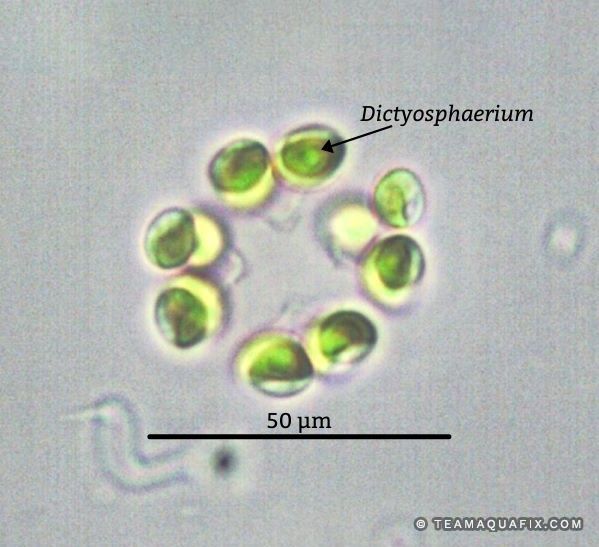
Many algae that grow in lagoons, such as Dictyosphaerium, are symptoms of high levels of sludge build-up and internal nutrient recycling. They will contribute to elevated suspended solids and pH, but are helpful for the reduction of ammonia, phosphorous, and nitrate.
The thick gelatinous layer surrounding the colonies of this alga may inhibit the effectiveness of chemical algaecides such as copper sulfate. AquaSticker can be used as an adjuvant with Argos to disrupt communication of the microbiota within this layer to enhance treatment efficacy. To address the alga’s root cause, sludge can be physically removed by dredging or a non-disruptive option: Sludge Rx. This can aid in sludge reduction and prevent resuspension of nutrients, such as nitrogen and phosphorus.
Because wastewater issues and the cause behind algae can be complex, we recommend our Filament ID and Microanalysis. This not only confirms algae and filament ID, but looks at biological indicators, plant design, and incoming substrates to decode your unique process.
Dictyosphaerium is a colony-forming green planktonic alga that may appear in wastewater lagoons with high levels of organic sludge. In lagoons with thick organic sludge buildup, it may cause a very persistent bloom that requires treatment. The colonies of Dictyosphaerium have four (or more) spherical cells connected by thin strands of the mother cell wall. The planktonic colonies of Dictyosphaerium are enclosed in a gelatinous envelope of extracellular polymeric substances (EPS) and can cause high effluent TSS and BOD levels. Read more about the effect of EPS in wastewater.

39041 RGE RD 283,
Red Deer County, AB T4E 0M2
Phone: 1-888-466-0031 |
Fax: 1-888-507-9716
To place an order, please fill out the required fields below and proceed to checkout. Ensure all information is accurate, and feel free to contact our support team if you have any questions or need assistance. Thank you for choosing us!